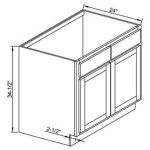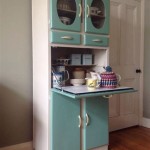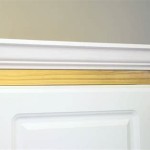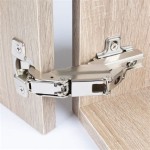Kitchen Cupboard Lifter: A Comprehensive Guide
The term "kitchen cupboard lifter" encompasses a range of solutions aimed at improving the functionality and accessibility of kitchen storage. These solutions often address common problems such as limited reach, back strain, and inefficient use of space within kitchen cabinets. Instead of a single, standardized product, a kitchen cupboard lifter can refer to various mechanisms and modifications, each designed to enhance a specific aspect of cabinet usability. This article will explore different types of cupboard lifters, their uses, and factors to consider when selecting the most appropriate solution.
Understanding the Need for Kitchen Cupboard Lifters
Kitchen design often prioritizes aesthetics, sometimes overlooking the practical needs of users. Standard cabinet configurations can pose challenges for individuals with limited mobility, those who are shorter in stature, or anyone who simply wants to maximize the available storage space. Reaching items in high or deep cabinets can require stretching, bending, and lifting heavy objects awkwardly, potentially leading to injuries. Furthermore, traditional cabinet designs can result in wasted space, particularly in the back of cabinets where items are easily forgotten and become inaccessible. The need for kitchen cupboard lifters arises from the desire to create a more ergonomic and efficient kitchen environment that accommodates a wider range of users and optimizes storage utilization.
The desire to enhance kitchen accessibility is also driven by an aging population. As individuals age, they may experience a decrease in mobility, strength, and flexibility. Maintaining independence in the kitchen is crucial for many seniors, and modifications such as kitchen cupboard lifters can significantly contribute to their ability to continue cooking and managing their own meals. These assistive devices help to overcome physical limitations and promote a safer and more comfortable kitchen experience.
Beyond accessibility, kitchen cupboard lifters can also improve overall kitchen efficiency for all users. By bringing the contents of cupboards within easier reach and making them more visible, these solutions reduce the time and effort required to locate and retrieve items. This can be particularly beneficial in busy households where time is a valuable resource.
Types of Kitchen Cupboard Lifters and Their Applications
The category of kitchen cupboard lifters includes a diverse range of products, each designed to address specific storage challenges. These solutions can be broadly classified into several categories, including pull-down shelves, swing-out shelves, and lift-up systems. Understanding the characteristics of each type is crucial for selecting the most suitable option for a particular kitchen.
Pull-Down Shelves: Pull-down shelves are designed for upper cabinets and allow users to bring items stored on higher shelves down to a more accessible level. These systems typically consist of a shelf that is attached to a spring-loaded or gas-assisted mechanism. By pulling down on the shelf, the mechanism lowers it to a comfortable height, allowing users to easily retrieve or store items. Pull-down shelves are particularly useful for individuals with limited reach or those who have difficulty lifting heavy objects overhead.
The installation of pull-down shelves involves mounting the mechanism to the interior sides of the cabinet. The shelf itself is then attached to the mechanism. It's essential to ensure that the cabinet is strong enough to support the weight of the shelf and the items stored on it. Different models of pull-down shelves have varying weight capacities and size limitations, so it's important to choose one that is appropriate for the intended use.
Swing-Out Shelves: Swing-out shelves, also known as blind corner optimizers, are designed for corner cabinets, which are notorious for being difficult to access. These systems typically consist of a series of shelves that are attached to a pivoting frame. When the cabinet door is opened, the shelves swing out, bringing the contents of the corner cabinet within easy reach. Swing-out shelves eliminate the need to reach deep into the cabinet to retrieve items, making them a valuable addition to any kitchen with corner cabinets.
The installation process for swing-out shelves involves mounting the pivoting frame to the interior of the corner cabinet. The shelves are then attached to the frame. It's crucial to ensure that the frame is properly aligned and securely fastened to the cabinet. Swing-out shelves come in various configurations, including full circle lazy susans, kidney-shaped pull-outs, and multi-tiered systems. The choice of configuration depends on the size and shape of the corner cabinet and the desired storage capacity.
Lift-Up Systems: Lift-up systems are designed for upper cabinets and allow users to access the entire contents of the cabinet with a single upward motion. These systems typically consist of a door that is attached to a gas-assisted or electric mechanism. When the door is lifted, the mechanism raises it smoothly and effortlessly, providing full access to the cabinet's interior. Lift-up systems are particularly useful for storing frequently used items such as dishes, glasses, and spices.
The installation of lift-up systems involves mounting the mechanism to the cabinet frame and attaching the door to the mechanism. The mechanism must be properly adjusted to ensure that the door lifts and closes smoothly. Lift-up systems are available in various styles and sizes, including horizontal lift-ups, vertical lift-ups, and bi-fold lift-ups. The choice of style depends on the size and configuration of the cabinet and the desired aesthetic.
Specialized Solutions: Beyond these main categories, there are also specialized solutions designed for specific storage needs. These include spice rack pull-outs, pantry pull-outs, and tray dividers. Spice rack pull-outs are designed to keep spices organized and easily accessible. Pantry pull-outs maximize storage space in pantries by allowing users to easily access items stored in the back. Tray dividers keep trays, baking sheets, and cutting boards organized and prevent them from sliding around. These specialized solutions can be integrated into existing cabinets or incorporated into new kitchen designs.
Factors to Consider When Choosing a Kitchen Cupboard Lifter
Selecting the right kitchen cupboard lifter requires careful consideration of several factors, including the type of cabinet, the intended use, the available space, and the budget. Evaluating these factors will help to ensure that the chosen solution meets the specific needs of the user and provides a long-term improvement to kitchen functionality.
Cabinet Type and Size: The type and size of the cabinet will significantly influence the choice of cupboard lifter. Pull-down shelves and lift-up systems are typically used for upper cabinets, while swing-out shelves are designed for corner cabinets. The dimensions of the cabinet will determine the maximum size of the lifter that can be installed. It's essential to measure the cabinet accurately and choose a lifter that fits properly. Some lifters may require modifications to the cabinet to accommodate the mechanism.
Intended Use and Weight Capacity: The intended use of the cabinet and the weight of the items that will be stored on the shelves should also be considered. If the cabinet will be used to store heavy items such as pots and pans, it's important to choose a lifter with a high weight capacity. If the cabinet will be used to store frequently used items, a lifter that provides easy access and smooth operation is desirable. It's crucial to select a lifter that is strong enough to support the intended load and durable enough to withstand frequent use.
Available Space and Clearance: The available space around the cabinet and the clearance required for the lifter to operate should also be taken into account. Pull-down shelves require clearance below the cabinet to allow the shelf to be lowered. Swing-out shelves require space around the cabinet to allow the shelves to swing out. Lift-up systems require space above the cabinet to allow the door to be raised. It's essential to ensure that there is sufficient space for the lifter to operate without obstructing other cabinets or appliances.
Ease of Installation and Maintenance: The ease of installation and maintenance is another important factor to consider. Some cupboard lifters are designed for easy DIY installation, while others require professional installation. If DIY installation is preferred, it's important to choose a lifter that comes with clear instructions and all the necessary hardware. All cupboard lifters require periodic maintenance, such as cleaning and lubrication, to ensure smooth operation. It's important to choose a lifter that is easy to maintain.

Hettich Parallel Shape Kitchen Cabinet Lifter

Buy Cabinet Lift Electric Flat Silver In Beoville Iconic

Wall Cabinet Lift Granberg Verti Interior Ab Sweden

Wall Cabinet And Cupboard Electric Lifting Sytems Inclusive Living

Heavy Duty Mixer Lift Rockler Woodworking And Hardware

Kitchen Cabinet Flap Lift

Hydraulic Lift Up System Quality Kitchen Cabinet Doors Since 2005 Cabinets Aluminum Furniture Storage

Kitchen Cabinet Hardware Accessories Aluminum Doors Soft Closing Support China Gas Spring Mechanism Furniture Made In Com

Hydraulic Kitchen Cabinet Support Supporting Doors Lift System Up Flap Stay China Gas Spring Mechanism Furniture Accessories Made In Com

Kitchen Appliance Lift White Wood Technology
Related Posts








